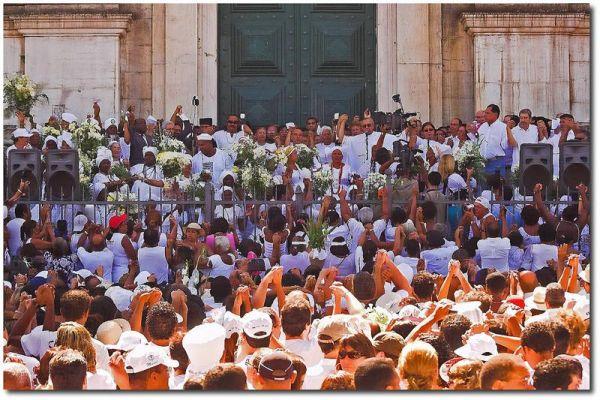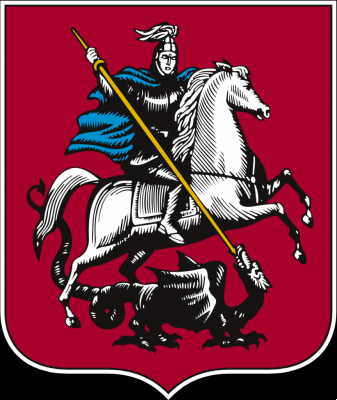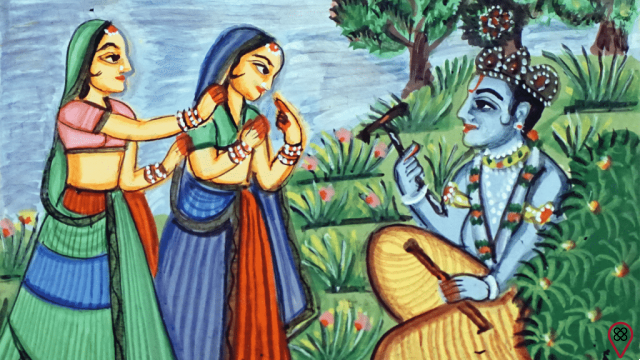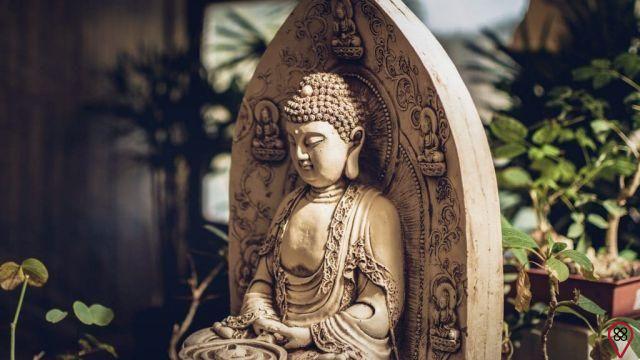Coincidentally or not, Saint George's Day and Ogun's Day are celebrated on the same date. Have you ever stopped to think that they could be the same person? What do you think? Let's understand a little more about this syncretism!
What is syncretism?
Syncretism means the mixture of different doctrines that remain with the traces of their original doctrine. A great example of syncretism is the moment when the slaves arrived in Spain, as they brought with them the entire cultural burden of Africa and its religions, such as Candomblé and Umbanda. But their beliefs were vetoed and they were forced to go through a long process of catechization, because at that time only the Catholic Christian religion was allowed.

But, with great intelligence, the slaves found ways to keep faith in their gods and began to make some associations: they invoked their orixás through the images of Catholic saints: Oxóssi, like São Sebastião, Iansã, in the form of Santa Bárbara , Oxalá, like Jesus Christ, Ogun, like São Jorge, among several other associations. From this action, each orixá came to represent one or more saints of the Catholic Church.
Syncretism between São Jorge and Ogun
Associated with battles and struggles, Ogun is a fearless orixá, a warrior and always ready for anything. His legends emphasize his ability to overcome, to lead, to win. Being a great inspiration of strength to his faithful, Ogun is considered by many to be an ideal warrior, who is always ready to win battles.
You may also like
- Delve deeper into the meaning of religious syncretism
- Discover and celebrate the Day of Saint Kings
- See the lesson of detachment given by Saint Francis of Assisi
Thus, it is easier to understand why the association between Ogun and São Jorge took place. In his image, the Catholic saint is on a horse, equipped with armor and a spear, which automatically reminds us of combat. Having been one of the soldiers in the Roman army, Saint George managed to rise through the ranks to become one of the officers.
Because of this association, both are celebrated on the 23rd of April.
Are they the same?
Nowadays, this syncretism is not very well accepted by those who practice Candomblé and Umbanda. This resistance occurs because over time these religions have become more independent and mature, declaring and emphasizing their own faith. Therefore, not everyone who has this belief accepts the idea that Ogun is the same as the Catholic saint Saint George.

The same thing happens among Catholics. They do not even consider making this association, as they claim that if they did, they would be worshiping and bowing to a god from a totally pagan cult that believes in non-human entities.
There is a very relevant difference between them: the orixás are considered as entities that have defects and virtues, unlike the saints of the Catholic Church. Besides the fact that Ogun's spirit energy nature is totally opposite to Saint George's nature. For these and other reasons, it is not possible that the two are the same person.
Similarities between the two
The two are considered as vigilantes and great warriors. São Jorge was titled as the protector of blacksmiths, soldiers and soldiers. He is said to be the man of God's army who was able to face a dragon on his horse and could even face the beasts to defend the Kingdom of Heaven with claw.
Meanwhile, Ogun is the orixá who is always at the forefront of battles. Known for being a trailblazer and fearless, Ogun was responsible for teaching men how to work with fire and iron. He is represented by a sword – the same one he uses to serve those who invoke him.
The saint and the orixá are usually invoked by those who need open paths. People invoke them to ask them to ward off enemies, to help solve some problems of injustice that affect some of the faithful.
History of St. George
This saint was born in Turkey, more precisely in Cappadocia, in 275 AD. His father was a great soldier and died in a battle – an event that made George and his mother move to the Holy Land. The saint's mother was a native of Palestine, very educated and had many assets, which enabled Jorge to have a better education.
Because he had a fighting spirit, he quickly became a soldier and soon after became captain of the Roman army. Jorge was very skilled with weapons and also one of the most dedicated soldiers at the time.
On April 23, 303, George died after fighting against the decree of Emperor Diocletian, who wanted to eliminate the Christians once and for all. The soldier was tortured and beheaded after refusing to declare that he would abandon his Christian faith.
Ogun's Story
African mythology states that the first time Ogun appeared was as a hunting man named Tobe Ode. It is said that he was the first orixá to descend from heaven and live among men on earth. Considered as the last Igbá Imole – a group of approximately 200 right-wing orixás that for some reasons was entirely destroyed by him. After that fact, Ogum received the task of being leader of the group Irun Imole, composed of 400 orixás of the left.

According to mythology, Ogun had the responsibility of teaching men how to make levers, shovels, axes, hoes, swords, among many other steel and iron tools.
African religion tells that when Oduduá, Ogun's father, became blind, he left the responsibility of leading the entire city of Ifé to his son. During the time he was leader, Ogun took part in and instigated several disputes against some neighboring kingdoms, which he always took for himself, winning battles. Such events made him greatly known for his warrior nature.

























